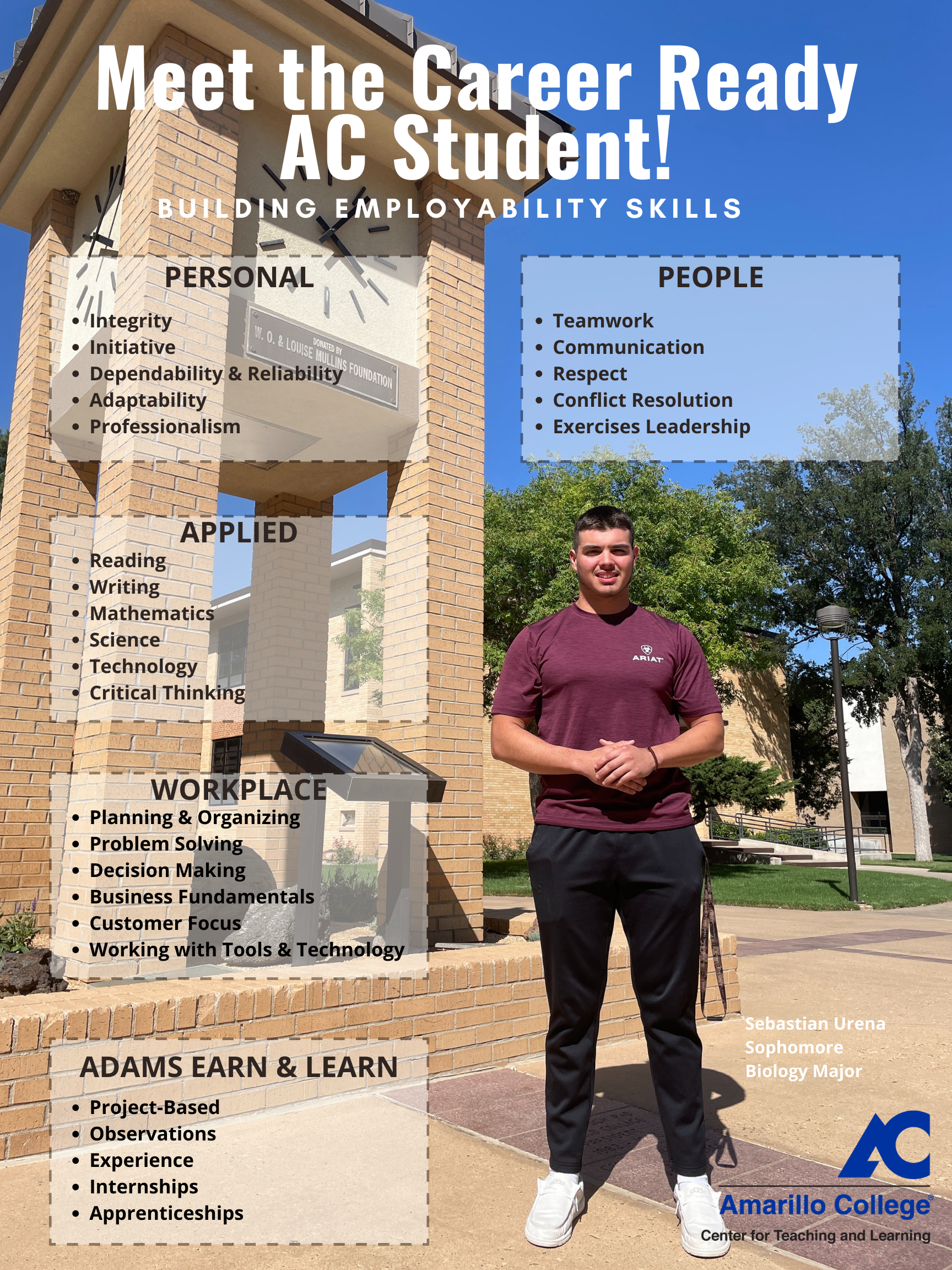Building Employable Students
Published by: Michaela Dodson - Instructional Designer
October 2021
As instructors and professionals in higher education we work hard to ensure the success of our students. One question we need to ask ourselves is “the world is changing, is my instruction changing with it?”
This video (Employability Skills,https://cte.ed.gov/initiatives/employability-skills-framework) discusses the relationship between higher education and the workforce demands. Student talent not only emerges, but must be built. Employability skills (cte.ed.gov, n.d, PDF) sometimes known as soft skills, are ever changing and more important than ever in the job market. Some examples of employability skills are communication and interpersonal skills, problem solving, working under pressure with deadlines, collaboration with team members, ability to adapt, negotiating, organization and technology use. In order for our students to be successful we need to make sure that we are incorporating intentional practice of these skills within our curriculums and classroom. How can we change our instruction, homework, classwork and assessments to incorporate these skills? As we say at AC, how can we “love our students to success”?
Could we tweak some of our assessments and classwork to be portfolios and performance tasks instead of traditional tests and assignments? (ex. formative assessments, open response, or using real life, authentic situations and response)?
Could we add opportunities for students to think on their own, then share and collaborate with others, then share out to the class?
Could we incorporate interactive lecturing and collaborative learning techniques to everyday teaching practice?
Could we tweak our assignments and work to utilize critical thinking and problem solving in all of our courses?
Could we flip some of our assignments so that we can go deeper in our class time and allow time for more collaboration?
Could we apply real world applications to engage students at every turn?
Could we build relationships with those in our community for volunteer and work based learning, apprenticeships or internships (Adams Earn and Learn)?
We need to find ways to connect the relationship between classroom learning and the outside world. We need to give our students skills to ensure program completion or be able to successfully transfer. There are many ways to take a step in the right direction of changing with the times.
By supporting our students' academic and personal growth we are supporting the growth of our local economy. As educators, it is our duty to produce employable citizens in each of the needed fields of our community. The Data Analytics Institutional Research department at Amarillo College has provided us with a useful tool for helping us to monitor each of our programs at the college and the statistical data indicating how we are comparing to the growth of our local economy. To access this resource you can visit the DAIR website and see the statistics on the labor market demand for your community. The labor market and graduates data shows projected new jobs (growth), projected replacement jobs (replacement), and total projected jobs (jobs). Also shown are the projected number of graduates (graduates), and the gap between jobs and graduates (jobs - graduates). The projections are related to the programs that fall under the chosen department.
The O*NET system is another source that simplifies and gives insight into the current job market. It describes jobs in terms of skills, tasks required, knowledge needed, work activities etc. The site is a regularly updated database of occupational characteristics across the U.S.
In order for our students to be all they can be, we must be all we can be and provide them with every opportunity and skill we can as we guide them to success. We must know where they are, what is out there and how to get them there.
https://cte.ed.gov/initiatives/employability-skills-framework
https://s3.amazonaws.com/PCRN/docs/Employability_Skills_Framework_OnePager_20180212.pdf
1 (n.d.). Applications - Amarillo College. Retrieved September 14, 2021, from https://dair.actx.edu/
2 (n.d.). Overview of the Employability Skills Framework Resources - LINCS. Retrieved September 14, 2021, from https://lincs.ed.gov/sites/default/files/employability-skills-framework-overview-of-resources.pdf
3 (n.d.). PCRN: Employability Skills - Perkins Collaborative Resource Network. Retrieved September 14, 2021, from https://cte.ed.gov/initiatives/employability-skills-framework
4 (n.d.). PCRN: Employability Skills - Perkins Collaborative Resource Network. Retrieved September 14, 2021, from https://cte.ed.gov/initiatives/employability-skills-framework
5 (n.d.). O*NET OnLine. Retrieved September 14, 2021, from https://www.onetonline.org/

Contact Us
Student Help - The Underground
Ware Student Commons, Basement
Phone: (806) 371-5429
Email: ctlstudenthelp@actx.edu